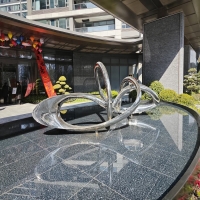Welcome to the website for landscape facilities products and knowledge.
How does the trash can’s design ensure it is easy to clean with minimal water usage?
In today’s eco-conscious world, trash can designs have evolved to prioritize both hygiene and sustainability. A well-designed trash can minimizes water usage while ensuring effortless cleaning, thanks to several innovative features.
1. Smooth, Non-Porous Materials: Modern trash cans are often made from materials like stainless steel or high-quality plastics with smooth surfaces. These materials resist stains and odors, allowing for quick rinsing without extensive scrubbing or excessive water.
2. Removable Liners and Inner Buckets: Many designs include detachable inner buckets or liners, enabling users to dispose of waste without contaminating the main bin. This reduces the need for frequent deep cleaning and conserves water.
3. Angled Edges and Minimal Crevices: Smart designs avoid hard-to-reach corners or seams where grime can accumulate. Smooth, rounded edges ensure dirt and liquids can be easily wiped away with minimal water.
4. Water-Efficient Cleaning Mechanisms: Some advanced models incorporate self-cleaning features, such as rinse-friendly coatings or built-in drainage systems, further reducing water waste during maintenance.
5. Odor-Control Technology: By integrating antimicrobial coatings or odor-neutralizing materials, these trash cans stay fresher longer, reducing the frequency of washes and water consumption.
Ultimately, a thoughtfully designed trash can combines practicality with environmental responsibility, making it easier to maintain cleanliness while conserving precious water resources.
Related search:

Recommendation
Abstract art sculpture, stainless steel metal sculpture, large-scale water feature sculpture